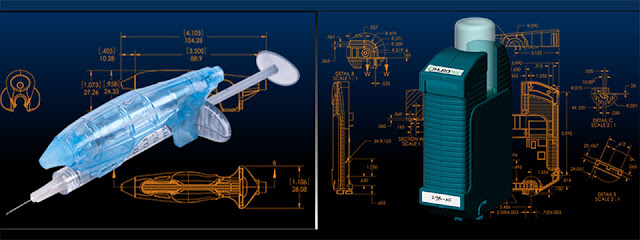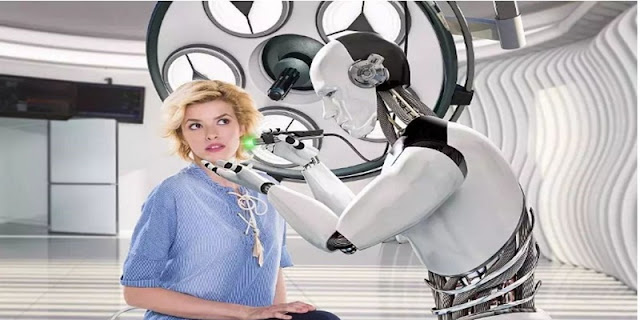What Is Medical Device Prototyping ?
Medical Device Prototyping
Medical device prototyping is rudimentary to
coming up with a design to medical products and the production process. Coming
up with advanced models of products in medical technology gives you the chance
to analyze or evaluate the idea and task of additional enhancements.
Lately, medical devices have become an
increasingly growing sector. The improvements seen in materials, design and
technologies have raised the likelihood of finding a superior quick fix for
those medical complications whose redress was, up until now, inconceivable. A
broad scope of new answers is applicable varying from new items to new
commodities, tools and methods.
Doctors have found out how the most recent
approaches to engineering aid their job by making surgery and treatment
procedures more accessible than it was during the early days. Because of this
reason, medical equipment are now the top subject matter of mechanical and
academic importance in fields such as prototypes, design and production.
To come up with a quality device, one must
follow the right procedures. Fruitful prototyping requires proper
understanding of the objective of the prototypes, finding out who is meant to
use the device, fundamentals of the prototypes and choosing the right
manufacturing procedures for each part.
Prototyping of medical equipment
Prototyping is an essential weapon in the
market exploration and product development procedures. An efficient model can
swiftly transmit design ideas to a final user, company administration, or a
possible venture capitalist.
Prototyping gives room for marketing to
witness the feedback of other people to ratify or nullify the product concept.
It is an effective tool used to decide the application of the equipment by
watching how people relate to it. The prototype can put to the test the
engineering usefulness of a design idea.
Categories of prototypes
The various types of prototypes that can be used
during the production of medical devices include:
●
Presentation prototypes- This is a form of
resemblance prototype which is inapplicable. It can be used in the purchasing
shares from Marketing to send an idea to the user and get some response about
it.
●
Workability prototypes- This one can be used
to substantiate fresh design ideas and clear-cut device responsibilities. Such
prototypes can resemble the appearance of respective modules, do not often
simulate the original object or even the capacity of the end product. This type
of prototype can apprise product development over the course of a particular
design to take and accommodate itself to quick redundancies to make swift
progress.
●
Functional prototypes- These type of
prototypes come in a self-sufficient package and supply the engineering team
with an apparatus to examine design necessities. Such prototypes are also used
in the repetitive design series where the unit is analyzed, and design
amendments are made to attain the design blueprint.
●
Production prototypes- This type of prototype
is used to produce products that will make their way to the market. Different
parts can be put together with prototype manufacturing, and small quantity
assembling procedures can be used appropriately. The model is the last emphasis
that is heading for production. The number of parts produced should be enough
for the authentication of a particular model, where the fundamentals can be
examined to guarantee conformity to the stipulations.
Methods of prototyping
Once you decide on the intention and aim for
the prototype, the means of production can be resolved. The procedures for
manufacturing procedures may consist of a sample part and production cost,
starting time, completion, structural precision, and firmness of the items. The
various methods include:
3D prototyping
It is the most approved procedure of
prototyping. The design is made using computer-aided design, and a
three-dimensional data file is created. The created file is used in the
production of a prototype, where a couple of ejection methods like selective
laser sintering, selective laser melting, fused deposition modeling,
stereolithography and digital light processing.
Normal machining
Machining is a well-entrenched procedure of
prototyping. It gives room for the application of a couple of materials which
include many plastics and metals. This method of prototyping has the benefits
of high accuracy levels and minimal manufacturing expenses. However, the price
of the piece can be high because of the job content.
Casting
In this procedure, a design of the piece is
first built to shape a part using a special joining liquid popularly known as
resin. The design is traditionally made through machining process or 3D
prototyping. A sculpt made and separated into two equal parts of the design
using malleable silicone or conglomerate material. The binding material is then
drained into the sculptor make it harder.
The disadvantage that comes with this
procedure is that it can only produce solid pieces with a limited mold life.
The process is steady in precision, production, and cost of pieces.
Molding
When you are molding a piece, a small cavity
should be formed on the area to be fabricated and integrated into a sculpture
frame. The most convenient molding procedures include compression, injection,
rotational and blow molding. Sculpting prototypes have extended production
times than fabricating, and higher manufacturing costs. The benefits you get to
enjoy with molding include quality surface finishing, steady dimensions, reduced
prices and the manufacturing of top quality pieces.
Thermoforming
Thermoforming makes good use of a plastic
sheet which is heated and set up on a double structural sculpt with the use of
free space to extend the plastic material into the sculpture where it is given
room to cool down and maintain its last shape of completion.
The main advantage of this procedure is the
fact that it can bring into existence pieces with various widths on the wall by
fluctuating the sheet stockpile. The production times and manufacturing prices
are ordinarily reduced than molding.
The detriments that come with using this
prototyping procedure include low spatial precision, restrictions on matters
related to arithmetics and surface completions. There are persistent needs for
after completing all the activities.
Conclusion
Medical device companies have been relying on traditional methods over the past years which has proved to be ineffective.Prototyping in the production of medical equipment has seen the creation of most devices that have been useful in the health sector. There is no better production method for medical device companies than prototyping.
Conclusion
Medical device companies have been relying on traditional methods over the past years which has proved to be ineffective.Prototyping in the production of medical equipment has seen the creation of most devices that have been useful in the health sector. There is no better production method for medical device companies than prototyping.






Comments
Post a Comment